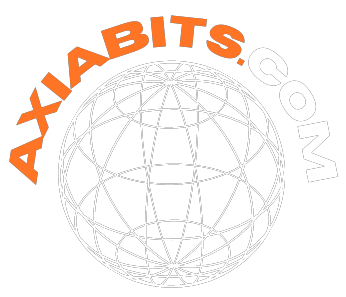Mailchimp is a versatile marketing automation platform specifically designed for email marketing. It enables businesses to create, send, and analyze email campaigns effortlessly, facilitating seamless communication with their audience. In addition to its email marketing features, the platform offers audience segmentation and social media advertising functionalities, presenting a holistic marketing solution. This article explores the seamless integration of Mailchimp with Webflow, offering a step-by-step guide to enhance your email list growth strategy.
Table of Contents
What is Mailchimp?
To initiate our journey, let’s understand the powerhouse that is Mailchimp. Mailchimp stands as a robust email marketing platform designed not only to manage contact lists but also to craft targeted email campaigns. Its automation capabilities, detailed performance insights, and user-friendly interface make it accessible to individuals at any proficiency level. Integrating Mailchimp with Webflow proves to be a strategic move in expanding databases and engaging with existing users.
Webflow Mailchimp Integration in 7 Simple Steps
Delving into the integration process, we present a comprehensive seven-step guide to link Mailchimp with Webflow seamlessly.
Step 1: Create a Mailchimp Account
Make sure to have a Mailchimp account before linking it to your Webflow website. Visit Mailchimp, click “Sign up,” choose a plan based on your database needs, or opt for the Free Plan.
Select “Sign Up Free” to continue. If you decide to, you can upgrade to a paid plan later.
Provide essential information such as your email, username, and password. Mailchimp may request your business details for communication purposes. After a brief email activation process, your account will be accessible.
Step 2: Generate Code to Connect Mailchimp and Webflow
Upon account activation, the next step involves generating the necessary code to establish a connection between Mailchimp and Webflow.
Log in to your Mailchimp account and follow the steps:
- Select the “Integrations” tab and navigate the menu to locate “Manage.”
- Click on Custom Website.
- In the following window, input the URL of your Webflow website into the “Enter site URL” field and then click on “Get Code.”
- Copy the code and save it to your clipboard.
Also, See This: How to integrate ShipStation & Webflow in 2 minutes
Step 3: Add Mailchimp-generated Code to Webflow Site
To insert the copied code into your Webflow website, go to the site settings and proceed with the following steps:
- Navigate to Custom Code and insert the copied code in the Header Code section.
- Save the modifications and return them to your Mailchimp account.
- Select “Check Connection” to verify that the two platforms are successfully linked.
Step 4: Generate Action Code for Mailchimp Forms
This step involves retrieving the Action code from Mailchimp to embed it within Webflow forms.
- In Mailchimp, go to the Audience tab and choose Signup Forms.
- Choose Embedded Forms in the appearing window.
- Customize the form field under Form Fields to align with your Webflow form. Click Continue when finished.
- Within the text editor, find the term “form action” and duplicate the URL enclosed in the quotation marks.
Step 5: Add Action Code to Webflow Form
Building on the previous step, users are directed to create a subscription form on their Webflow website.
- In the Webflow Designer, choose the form on the canvas.
- Under the Settings tab, select Form Settings.
- Insert the action code under the Action field and configure the Method as POST.
Step 6: Test the Form
Before making the form accessible to the public, it’s crucial to test it. The following steps will lead you through the process:
- Access the page on your live Webflow website containing the form and complete it.
- Go to your Mailchimp account and All Contacts within the Audience tab.
- In the Manage Contacts section, verify the form details are displayed accurately.
Step 7: Publish Your Webflow Site
The final step concludes the integration process, affirming that the Webflow site is now seamlessly integrated with Mailchimp. Users can confidently publish their sites and effortlessly monitor their databases.
Also, See This: How to Launch a Webflow Site Without Breaking Everything
Benefits of Using Mailchimp for Email Marketing in Webflow
Highlighting the advantages of utilizing Mailchimp for email marketing within the Webflow ecosystem, this section underscores Mailchimp’s robust features. These features include organizing mailing lists, synchronizing contact lists with Webflow, creating targeted email campaigns, and adding functionalities such as form creation, pop-ups, sales email automation, and campaign scheduling. Mailchimp’s insightful reports and analytics empower users to track subscriber engagement, providing a cost-effective tool to initiate and scale email marketing efforts for Webflow sites.
Conclusion
In conclusion, the symbiotic relationship between Mailchimp and Webflow, both recognized for their user-friendly no-code platforms, offers an unparalleled advantage in scaling businesses. This integration unlocks the full potential of these platforms, enabling users to kickstart their journey with ease. Should challenges arise during the Mailchimp-Webflow integration, users are encouraged to reach out for assistance from Webflow experts, ensuring swift and efficient resolutions.
Frequently Asked Questions
Why integrate Mailchimp with Webflow forms using Webflow Logic
Integrating Mailchimp with Webflow forms using Webflow Logic streamlines the data transfer process, automates submissions, and enhances email marketing efficiency by ensuring seamless synchronization between the two platforms.
How do I generate API keys for Mailchimp integration with Webflow?
To integrate Mailchimp, you must create API keys in your account. Detailed instructions on generating these keys are included in our guide, ensuring a secure and successful integration.
Can I customize the design of Webflow forms during integration?
Yes, our guide covers designing Webflow forms focusing on functionality and aesthetics. You can customize form fields, settings, and styles to align with your website’s design and user experience.
What role does Webflow Logic play in Mailchimp integration?
Webflow Logic facilitates seamless integration by allowing users to set up interactions triggered by form submissions. This logic ensures that data is efficiently transmitted from Webflow forms to Mailchimp, automating the process.
Is Mailchimp integration through Webflow Logic suitable for advanced customizations?
Absolutely. The guide delves into advanced customizations, including conditional logic, double opt-ins, and additional features for personalized user experiences, offering a comprehensive approach to Mailchimp integration in Webflow.
How can I troubleshoot issues with Mailchimp and Webflow integration?
Troubleshooting tips are provided in the guide to address common integration issues. Additionally, users can leverage Mailchimp’s testing tools and Webflow community forums for support in troubleshooting and resolving any challenges.







